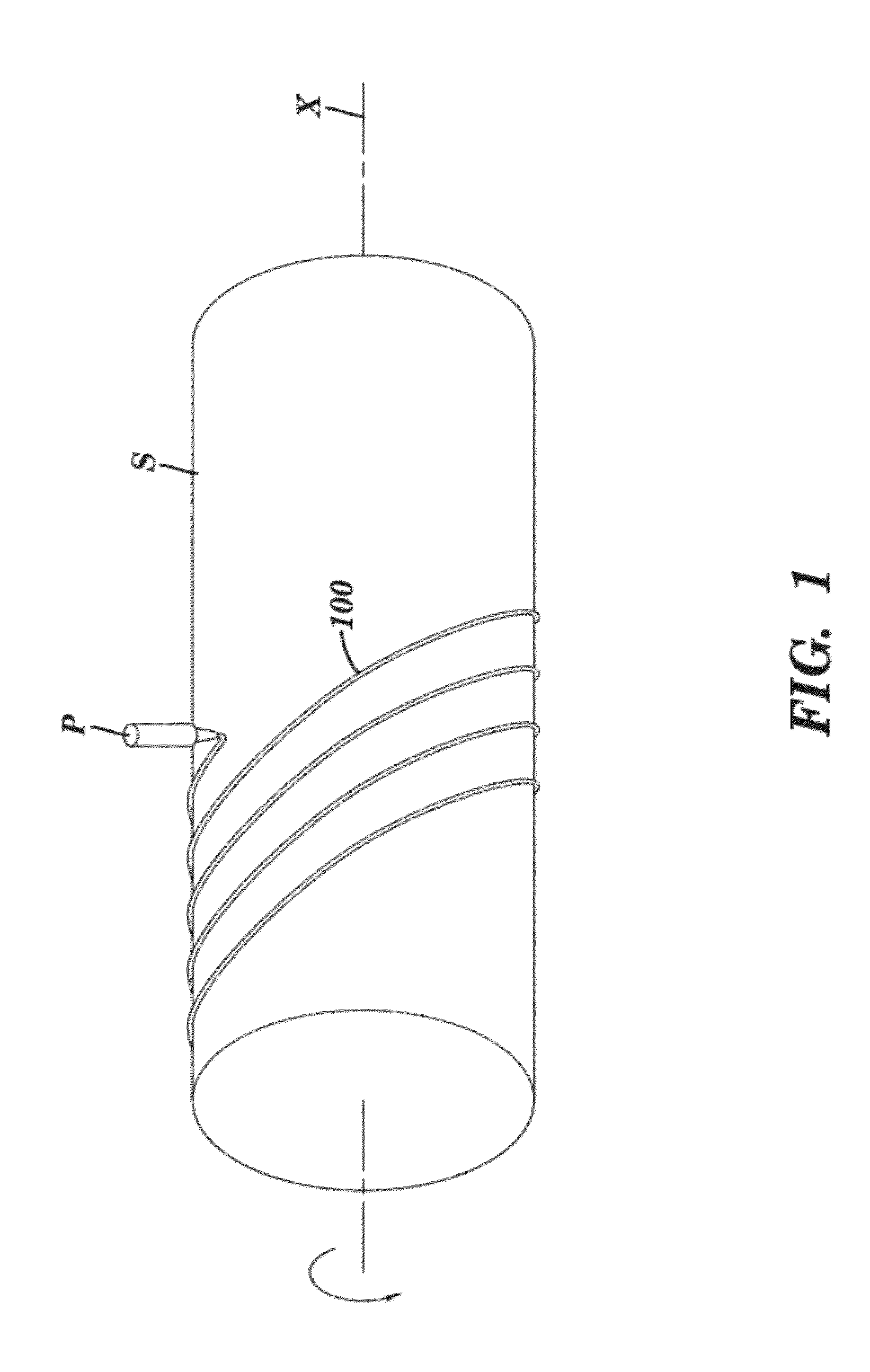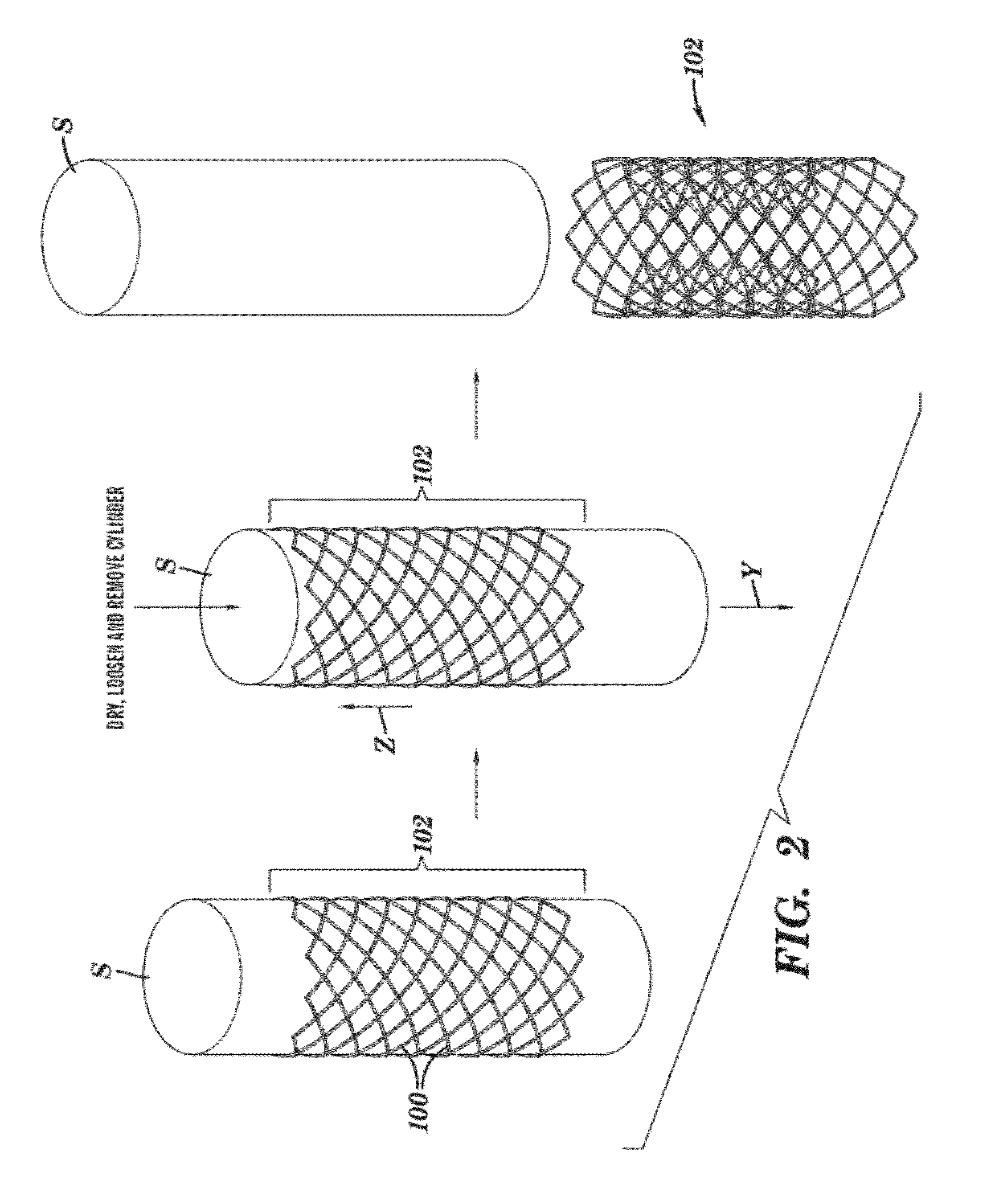Stents and methods of making stents
a technology of stents and stents, which is applied in the direction of prosthesis, blood vessels, catheters, etc., can solve the problems of increased risk of late thrombosis, renarrowing of blood vessels, and occlusion or weakened passageways, so as to reduce materials waste, reduce manufacturing steps, and reduce manufacturing costs
- Summary
- Abstract
- Description
- Claims
- Application Information
AI Technical Summary
Benefits of technology
Problems solved by technology
Method used
Image
Examples
example 1
[0070]Polycaprolactone (Mn 70,000-90,000; Sigma-Aldrich) was dissolved in tetrahydrofuran (Sigma-Aldrich) at a level of 20% by weight. This stent ink was deposited by a Micropen™ writing device in a continuous open pattern on a polytetrafluoroethylene (PTFE) tube (5 cm outer diameter; Zeus Advanced Biomaterials). A total of four layers were applied, each one positioned directly on top of the previous one. After the first, second, and third layers were applied, the stent was allowed to dry under ambient conditions for approximately 5 minutes before writing the next layer. After the fourth layer was printed, the stent was cured at 55° C. for 10 minutes in a forced air oven. The stent was easily removed in a single piece from the PTFE tube, yielding a device with a thickness of approximately 80 μm and a strut width approximately 0.7 mm. The openings between struts were approximately 1.5 mm in width and 3 mm in length. The entire stent length was approximately 20 m...
example 2
Radiopaque Polycaprolactone Stent
[0071]To the polycaprolactone ink described in Example 1, tungsten powder (99.9%, 1-5 μm, Alfa-Aesar) was added to yield a weight ratio of tungsten:polycaprolactone of 88:12 (volume ratio of 30:70) and a total solids level of 67.6% by weight. A radiopaque stent was produced by writing a single layer of this ink, using a Micropen™ writing device, on a polytetrafluoroethylene (PTFE) tube (3.6 cm outer diameter; Zeus Advanced Biomaterials) and drying at 55° C. for 10 minutes before removing from the PTFE tube. The thickness of the resulting stent was 36 μm, and the length and opening dimensions were identical to that described in Example 1.
example 3
Two-Part Stent that is Radiopaque Only at its Ends
[0072]Example 1 was repeated except only two layers of ink were deposited, resulting in a stent approximately 40 mm thick. Subsequently, the tungsten filled ink of Example 2 was deposited only over the struts on either end of the stent. This final product was cured at 55° C. for 10 minutes and removed from the tube.
PUM
 Login to View More
Login to View More Abstract
Description
Claims
Application Information
 Login to View More
Login to View More - R&D
- Intellectual Property
- Life Sciences
- Materials
- Tech Scout
- Unparalleled Data Quality
- Higher Quality Content
- 60% Fewer Hallucinations
Browse by: Latest US Patents, China's latest patents, Technical Efficacy Thesaurus, Application Domain, Technology Topic, Popular Technical Reports.
© 2025 PatSnap. All rights reserved.Legal|Privacy policy|Modern Slavery Act Transparency Statement|Sitemap|About US| Contact US: help@patsnap.com



